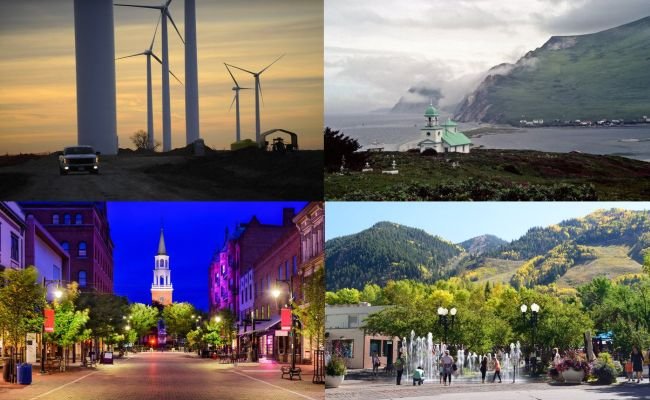Over the past decade, five locations ― Aspen, Colorado; Greensburg, Kansas; Burlington, Vermont; Kodiak Island, Alaska; and Rock Port, Missouri ― have successfully made the switch to 100 percent renewables.
Since Trump was elected in November, the number of cities and towns that have committed to using only clean power sources has more than doubled, with 46 cities , including Atlanta and San Diego, promising a move in that direction.
Cities play a key role in reducing carbon emissions, since they account for roughly 75 percent of global C0₂ emissions. It’s becoming easier for cities to clean their air as renewable energy continues to become more affordable. Once extremely costly, wind and solar will become the cheapest sources of electricity globally by 2030.
However the five towns that have already made the transition have different ideas about how to reach the 100% target. So one city’s path to 100 percent renewable energy could look very different from another’s.
Another challenge lies in who runs a city’s electric grid. Some grids are run by municipal utilities, which means the city can decide whether it wants to integrate cleaner energy options. However, other cities have grids that are run by a statewide monopoly utility. These cities don’t have jurisdiction to make those decisions.
In 2008, Rock Port, a small farm town in northwest Missouri, became the first community in America to be powered entirely by wind energy. Four large wind turbines are connected to the power grid and provide Rock Port’s 1,300 residents with more electricity than they can use.
When a tornado devastated Greensburg in 2007, half the town’s population of 1,400 left. Those who stayed decided to rebuild their community with sustainability at its core. Greensburg met its 100 percent renewable energy goal in 2013, harnessing the very thing that decimated it: wind.
Since 2014, Kodiak Island in southern Alaska has been 99 percent powered by wind and hydro. A decade ago, Kodiak got the majority of its power from hydro, but it was still burning 2.8 million gallons of diesel a year to make up the energy shortfall, at a cost of $7 million annually. So the island’s electric utility company set an ambitious goal that 95 percent of the community’s power would come from renewable energy sources by 2020. Kodiak succeeded in meeting its target six years ahead of schedule.
Vermont’s largest city, Burlington, achieved 100 percent renewable electricity in 2014 when it bought a hydropower facility on its outskirts. Burlington, which once relied heavily on coal, is now powered by a combination of energy from burning wood chips, wind, solar, landfill methane and hydropower. The city estimates it will save $20 million over the next two decades.
Aspen is a winter ski destination for the mega-rich, and it’s also one of the greenest towns in America. Ski resort towns have been hit hard in recent years as warmer winters mean less snow, so they’ve been ahead of the curve in tackling the effects of climate change. Aspen committed to a 100 percent renewable energy target in 2007 and achieved its goal in 2015 using primarily wind and hydropower.
But as clean energy technologies continue to become more affordable and efficient, a 100 percent renewable power target should be within reach for most cities.






